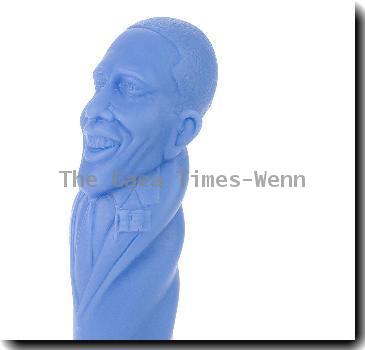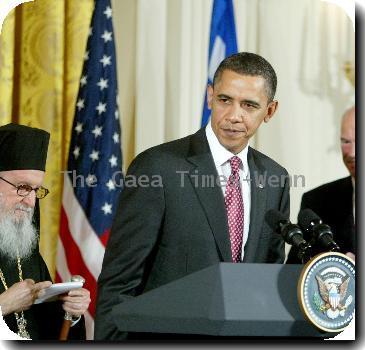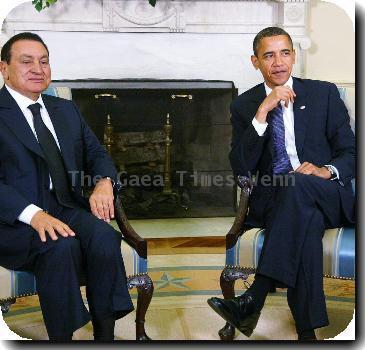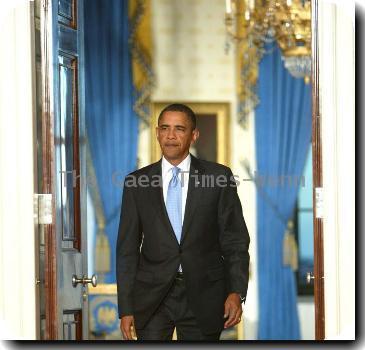Growth of interracial marriage slows as more US Hispanics, Asians seek to pair with immigrants
By Hope Yen, APWednesday, May 26, 2010
Is US a melting pot? Interracial marriage slows
WASHINGTON — Melting pot or racial divide? The growth of interracial marriages is slowing among U.S.-born Hispanics and Asians. Still, blacks are substantially more likely than before to marry whites.
The number of interracial marriages in the U.S. has risen 20 percent since 2000 to about 4.5 million, according to the latest census figures. While still growing, that number is a marked drop-off from the 65 percent increase between 1990 and 2000.
About 8 percent of U.S. marriages are mixed-race, up from 7 percent in 2000.
The latest trend belies notions of the U.S. as a post-racial, assimilated society. Demographers cite a steady flow of recent immigration that has given Hispanics and Asians more ethnically similar partners to choose from while creating some social distance from whites due to cultural and language differences.
White wariness toward a rapidly growing U.S. minority population also may be contributing to racial divisions, experts said.
“Racial boundaries are not going to disappear anytime soon,” said Daniel Lichter, a professor of sociology and public policy at Cornell University. He noted the increase in anti-immigrant sentiment in the U.S. after the Sept. 11, 2001, terror attacks as well as current tensions in Arizona over its new immigration law.
“With a white backlash toward immigrant groups, some immigrants are more likely to turn inward to each other for support,” Lichter said.
Broken down by race, about 40 percent of U.S.-born Asians now marry whites — a figure unchanged since 1980. Their likelihood of marrying foreign-born Asians, meanwhile, multiplied 3 times for men and 5 times for women, to roughly 20 percent.
Among U.S.-born Hispanics, marriages with whites increased modestly from roughly 30 percent to 38 percent over the past three decades. But when it came to marriages with foreign-born Hispanics, the share doubled — to 12.5 percent for men, and 17.1 percent for women.
In contrast, blacks are now three times as likely to marry whites than in 1980. About 14.4 percent of black men and 6.5 percent of black women are currently in such mixed marriages, due to higher educational attainment, a more racially integrated military and a rising black middle class that provides more interaction with other races.
The numbers reflect in part an internal struggle that Asians and Hispanics say they feel navigating two cultural worlds — the U.S. and their parents’ homeland.
Hai Nguyen, 37, of Houston recalls the instant connection she felt after meeting her first Vietnamese boyfriend, Greg, in college. Nguyen says while she had to explain herself to white boyfriends, with Greg it was a feeling that “he so gets me, because we eat the same food, we like the same things, our families know each other and there is so little that needs to be said.”
With the enthusiastic support of her parents, she and Greg married. But their connection soon began to fade, due partly to Nguyen’s budding career as a business analyst, which clashed with more traditional expectations for her to “always have fresh food on the table.” The two divorced and Nguyen is now remarried to Jon, who is white.
“My parents have prejudices, but they’ve accepted it,” said Nguyen. She described occasionally feeling different with her parents and other single-race couples. “They know it’s inevitable. My native tongue will eventually fade, and history will take its course.”
The demographic shifts can complicate conventional notions of racial identity.
Due to increasing interracial marriages, multiracial Americans are a small but fast-growing demographic group, making up about 5 percent of the minority population. Together with blacks, Hispanics and Asians, the Census Bureau estimates they collectively will represent a majority of the U.S. population by mid-century.
Still, many multiracial people — particularly those who are part black — shun a “multi” label in favor of identifying as a single race.
By some estimates, two-thirds of those who checked the single box of “black” on the census form are actually mixed, including President Barack Obama, who identified himself as black in the 2010 census even though his mother was white.
Census figures also show:
—Hawaii had the highest share of mixed marriages, about 32 percent. It was followed by Alaska, Oklahoma, New Mexico and Nevada, which ranged from 15 percent to 19 percent. The bottom five states were Pennsylvania, Maine, Kentucky, Mississippi and West Virginia, each ranging from 3 percent to 4 percent.
—Mississippi had the fastest growth in mixed marriages from 2000-08, a sign of closer ties between blacks and whites, though it still ranked second to last in overall share of mixed marriages.
—Mixed marriages jumped from 2.25 million to 3.7 million, or 65 percent, from 1990-2000, as such unions became more broadly accepted in Southern states.
—Among U.S.-born whites, about 0.3 percent married blacks in 1980; that figure rose to about 1 percent in 2008. About 0.3 percent of whites married Asians in 1980 and about 1 percent in 2008. About 2 percent of whites married Hispanics in 1980, rising to about 3.6 percent in 2008.
Juan Thurman, 37, a Houston sales account manager, says both family pressure and a strong ethnic identity weighed heavily on him as a Hispanic when he was dating, even as he found himself interacting more with other races in school.
In high school and at Rice University, Thurman said, he had fewer opportunities to meet Hispanic women in his honors classes. Ultimately, he married Emily, who is white, based on shared life views of gender equity and a liberal outlook toward religion. He relishes having friends of many different backgrounds.
“Interracial marriage is not a big deal,” Thurman said. “Still, from a family standpoint, I did feel culturally different and I continue to feel so.”
The figures come from previous censuses as well as the 2008 American Community Survey, which surveys 3 million households. The figures for “white” refer to those whites who are not of Hispanic ethnicity. For purposes of defining interracial marriages, Hispanic is counted as a race.
Online:
www.census.gov
Tags: 2010 United States Census, African-americans, Barack Obama, Censuses, Couples, Demographics, Events, High School Basketball, High School Sports, Hispanics, North America, Race And Ethnicity, Relationships, Sports, United States, United States Census, Washington





